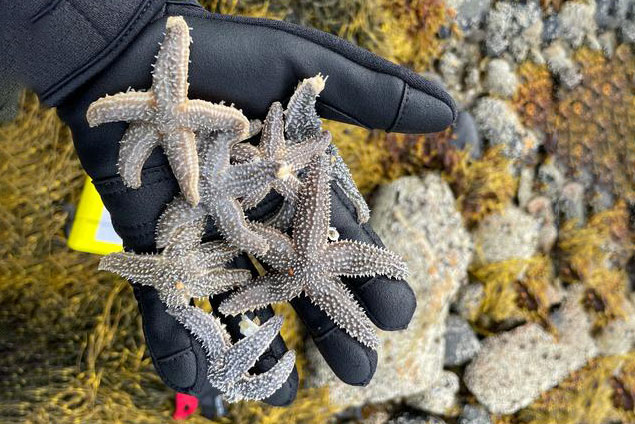Hybrid zones provide crucial windows into the dynamics of population evolution, showing how mechanisms like introgression and adaptation shape the genetic variety of populations. They are essential because they help us understand how species respond to their environments and how speciation occurs.
Scientists, in a new study- published in the journal Molecular Ecology- present genomic evidence of hybridization between two closely related species of sea stars– Asterias rubens, the common starfish, and Asterias forbesi, known as Forbes’ sea star. The genomic data suggests that hybrid starfish live and thrive from New England’s shores to the Canadian Maritimes.
Corresponding author Melina Giakoumis, a Ph.D., said, “It is the first genome-wide evidence of extensive hybridization in an ecologically important coastal species.”
The research aimed to determine whether crossbreeding occurred naturally among sea stars and, if so, what environmental conditions contributed to it. The scientists collected DNA samples from both species at 33 locations in the North Atlantic. After that, they carried out DNA sequencing using samples from Asterias amurensis, the sea star of the Northern Pacific, as a control group.
The scientists discovered through the genomic data that there has been extensive hybridization between the two species of sea stars from Cape Cod to Nova Scotia.
The sea stars were found to have varied environmental preferences: A. rubens has a greater range reaching western Europe, whereas A. forbesi has a smaller geographic range with adaptation to local settings. The scientists found that these preferences were also present in their genomes.

The Gulf of Maine was the center of hybridization, as predicted by the species distribution models used in the study. This finding suggests that environmental selection was a significant factor in preserving hybrid zones. The results also show that A. rubens favors colder habitats, whereas A. forbesi has a higher tolerance for warmer temperatures. Hybrids are discovered in regions where both species can tolerate the temperature.
Giakoumis said, “The study highlights the ecological importance of both sea stars, considered to be “keystone species” with significant impacts on surrounding marine communities. When they’re removed from their intertidal communities—the coastal zones between high and low tide—diversity among those ecosystems has been shown to collapse.”
Michael Hickerson, a biology professor with the CUNY Graduate Center and City College of New York and Giakoumis’ advisor, said, “Two questions arise from this study. Will the hybrids’ move to follow the changes in sea surface temperatures accelerate to the point of one species replacing the other? Or will they rescue the two species by being a source of gene combinations that allow greater resilience to climatic changes due to increased adaptive variation?”
“Since sea stars preferentially eat dominant competitors, they stabilize the ecosystem. These species are therefore crucial to study for marine conservation, as they have rippling effects throughout the rest of the community.”
“The Gulf of Maine is warming faster than 99% of the global ocean. Our results imply that the distribution of genomic variation in North Atlantic sea stars is influenced by the environment, which will be crucial to consider as the climate changes.”
“Hybridization is believed to be common in nature, and it has been observed more often as genomic data expands. As the first study to offer genome-wide proof of hybridization in these sea star species, the research supports the work of evolutionary biologists and other scientists who study intertidal ecology, the authors said, with possible implications for wildlife management and protection of intertidal zones in the North Atlantic.”
Journal Reference:
- Melina Giakoumis, Gonzalo E. Pinilla-Bitrago et al. Evidence of introgression, ecological divergence and adaptation in Asterias sea stars. Molecular Ecology. DOI: 10.1111/mec.17118
